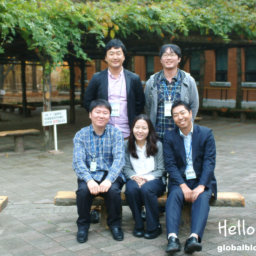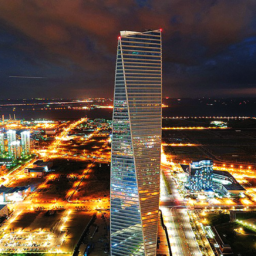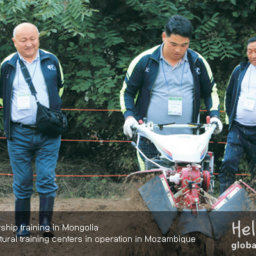 Iron: A Qualified Material of Processability and Economic Efficiency
Iron: A Qualified Material of Processability and Economic Efficiency
Some say that ‘Age of Iron’ of 3,000-year history is slowly coming to an end as alternative materials are constantly discovered and produced. The academic and industrial circles are ceaselessly seeking for advanced materials and cautiously expressing that these materials will accelerate the closure of the ‘Age of Iron’. However, when considering characteristics, various usages, economical efficiency, and any other aspect of the material, it is difficult to replace the ‘Age of Iron’ because iron is superior in all aspects compared to its potential substitutes.
The primary reason for the ‘Age of Iron’ to continue further is in the nature of iron (Fe). Iron is highly stable because it holds the highest bond energy compared to all other artificially-created elements. Also, it is much more economic than other metals or advanced materials because iron is the second most abundant metal after aluminum. Since it is flexible to transform into alloys by various purposes, it is can be applied in almost every industry field.
Second, demand for industrialization and urbanization is another factor that continues the ‘Age of Iron’. Realistically, it is hard to say that its growth will pause or recess at a global level. Therefore, the growth of the industry and economy will still remain as a dominative and indispensable paradigm.
Certainly, as the industry and economy develops, the demand for iron could relatively show less increase. However, almost all industries including the manufacturing and energy sector will extend their demands for steel and other fields such as construction business will expand their alternative and steel demands. As China and India, which officially have entered the developmental stage, Southeast Asia, Middle East area and even Africa go through urbanization and industrialization, the global scale of steel demands could increase largely in the future.
Lastly, the steel industry itself is transforming into an eco-friendly and energy-saving business. Coming from nature and returning to the nature, iron is a highly recyclable material. However, energy-guzzling activities and emissions of environmental pollutants occur while processing iron to fulfill the needs of human-beings. Nevertheless, these side effects are even decreasing as technology and endeavor develop further.
More Beneficial to Human-beings and Nature The continuation of the ‘Age of Iron’ does not necessarily mean that there will be no perceptible change. Like all things, iron and the steel industry are experiencing their own evolution. In fact, it is not only about the evolution of producing and processing method. The relationship between iron and human-beings is also going through a transformation. In other words, iron is evolving into a better direction for human-beings, nature and the earth.
The continuation of the ‘Age of Iron’ does not necessarily mean that there will be no perceptible change. Like all things, iron and the steel industry are experiencing their own evolution. In fact, it is not only about the evolution of producing and processing method. The relationship between iron and human-beings is also going through a transformation. In other words, iron is evolving into a better direction for human-beings, nature and the earth.
High-strength steel sheet aptly supports this view. High in tension and strength, the high-strength steel sheet is five times stronger than regular steel sheet of same thickness. The high-strength steel sheet is environmental-friendly because it increases fuel efficiency by reducing the vehicle’s weight. Also, it is capable of saving human life through its high collision safety that stems from its exceptionally high strength.
Electrical steel sheet is another example that minimizes energy loss and preserves the environment. As numerous motors are used in an automobile, a motor with good energy efficiency and magnetic characteristic is required for maximized energy use in a limited energy source and space; the electrical steel sheet precisely fulfills this required condition.
Despite the fact that iron is an environment-friendly material, it is undeniable that toxic substance has been coated or added in order to secure or enhance the special functions of steel sheets. However, lately there has been a wide use of eco-friendly steel sheets which do not contain the harmful substance but highlight the environment-friendly features.
As shown, iron has been evolving into a direction of benefiting human-beings while minimizing the damages on nature and eco-system. Also, it has been used most fundamentally and widely among all other materials, and this is expected to continue in the future. Especially, iron will maintain its pinnacle in the fields of marine and aerospace, the prospective categories of the most rapid developmental pace.
New Product Research and Development for the ‘Future of Iron’
Future is a subject to be pioneered rather than to be given. It is important to predict coming days of the ‘Age of Iron’, but it is much more crucial to figure out the general picture of the ‘Age of Iron’ that we create for the future.
Firstly, when we consider the technical aspect, it took about 25-50 years to discover a technical change that had significant influence on the steel industry. For instance, electricity was developed 100 years ago, and open-hearth furnace which was vanished in the late 1980s in the United States as basic oxygen furnace was invented in the 1950s. Moreover, continuous casting technology, which was developed in 1960s, has improved in its technological maturity, but is still in the process for completion.
Fundamentally, it is inevitable for the prospective iron and steel industry to move forward in a direction for the humans, the society, and the earth. In addition, the industry should advance with a direction that maintains a position of steel known for its diverse functions and economic efficiency.
Recently, main subjects of technology in the steel industry are cost reduction and high productivity, simplification of production, utilization of economical materials, new product development technology, and etc. Even though there are still financial and environmental issues in the way, there are endless possibilities in steel manufacturing and technology development opportunities related to the steel industry. In fact, these possibilities are tried in action every day.
The future of iron and the steel industry is promising when these useful features are expanded. Only those steel companies, whom maneuver their directions into researching and developing iron and steel products in corresponding ways, will be qualified to be the leader of the prospective steel industry.
Please keep your eyes open for POSCO, who is striving to be the leader of the future iron and steel industry through its futuristic perspectives on iron and steel products!














